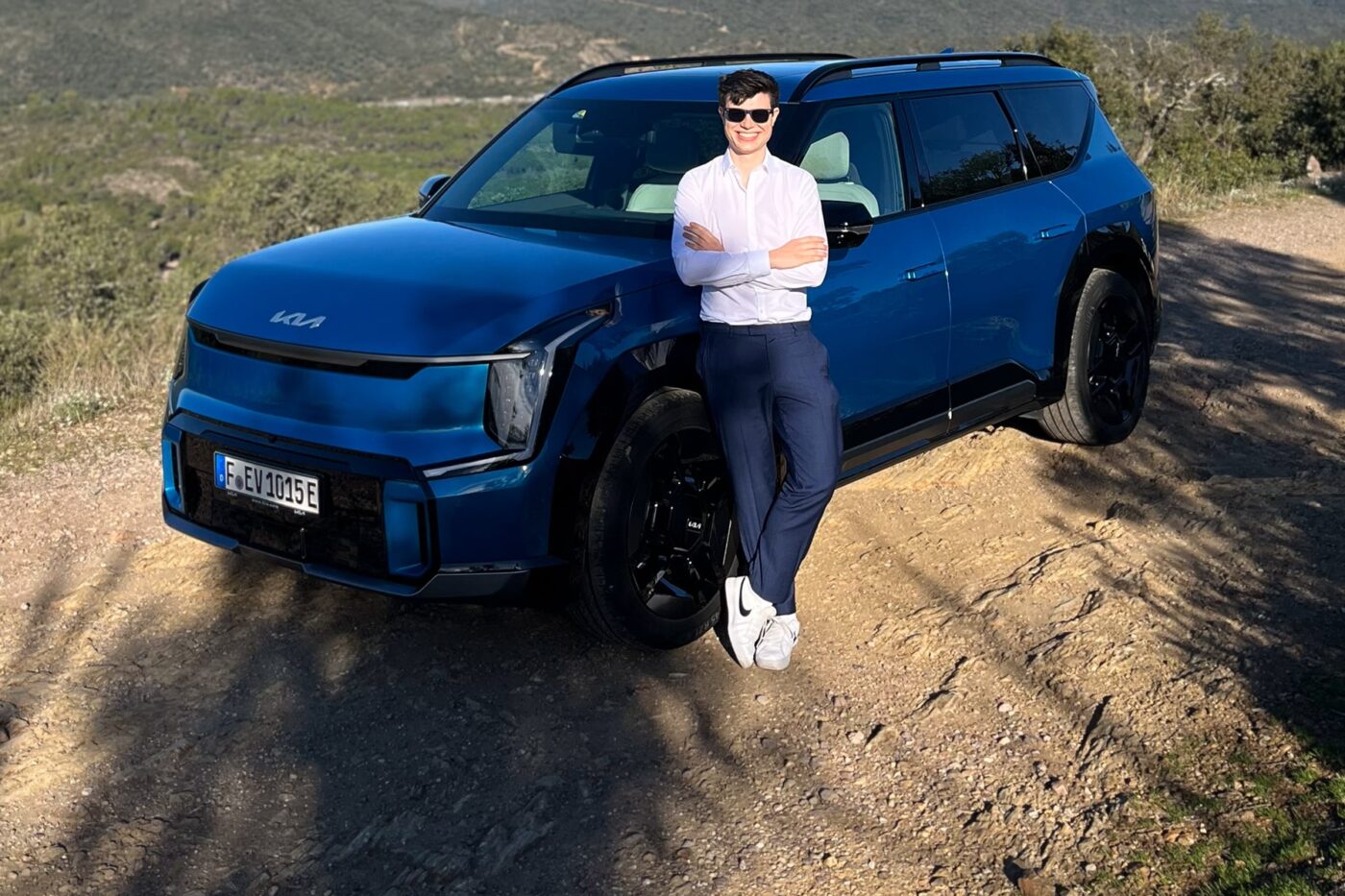
The Kia EV9 could just be the ultimate family car
Not so long ago, 800-volt architecture was e-mobility’s technological spearhead, available only in high-end vehicles from Porsche and Audi. That nimbus is gone since the Hyundai Motor Group (including Kia and Genesis) introduced said tech in more affordable segments.
After the EV6, the EV9 is Kia’s second vehicle based on the Group’s ‘Electric Global Modular Platform e-GMP, and the first model ever to combine ultra-fast charging and seven seats. The car, which looks rather bulky and chunky, turned out to be a luxurious family car during our test drive.
Clever interior
The boxy shape of the EV9 ensures plenty of legroom and headroom for all seats; the only compromise is the boot, as more than 330 litres may be needed for the luggage of seven travellers. With the seats folded down, however, this becomes up to 2,400 litres. The last row folds electrically, the middle row only manually.
The interior not only impresses with its sheer spaciousness but also various well-thought-out features: depending on the configuration, the Kia has six or seven seats. Our test car is the six-seater version with two seats per row; the backrest angle can be adjusted in every seat, even electrically in the last row. The individual seats in the centre row rotate by 270 degrees, which means that in addition to the standard orientation in the direction of travel, it is also possible to sit facing the other way or simplify boarding for people with physical disabilities. Child seat installation is also much more convenient when rotating the seat outwards than with a classic, fixed rear seat.
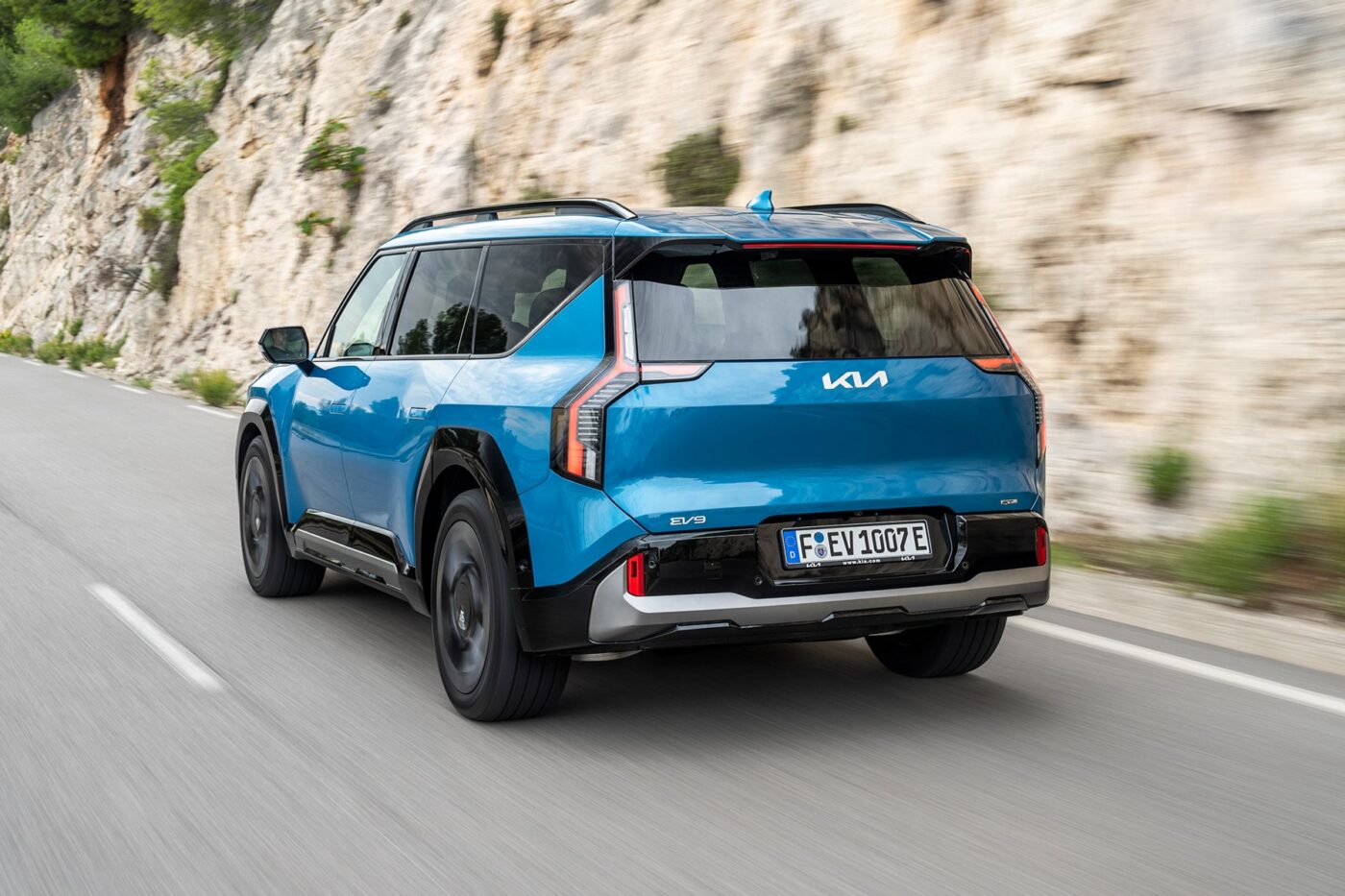
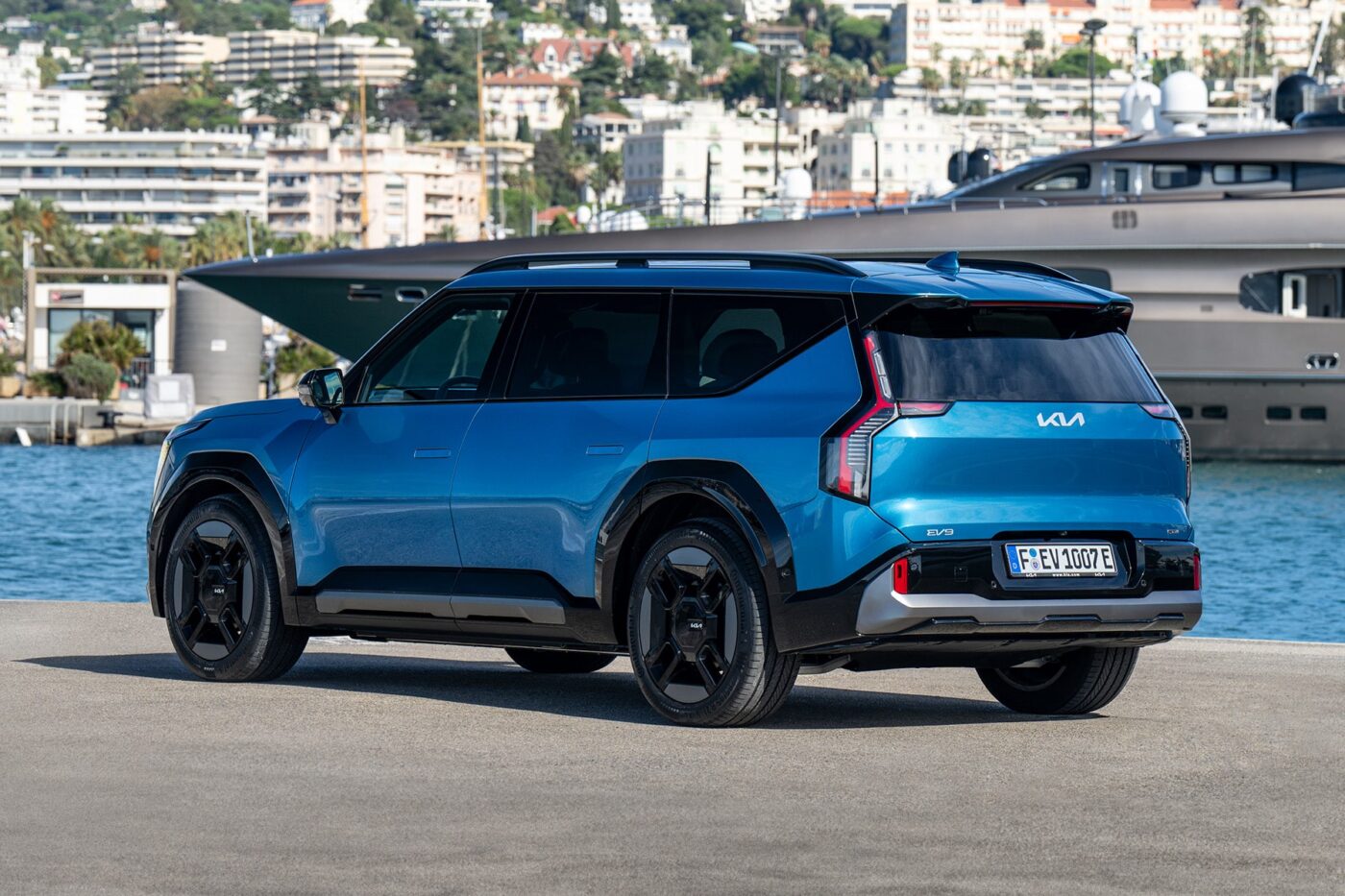
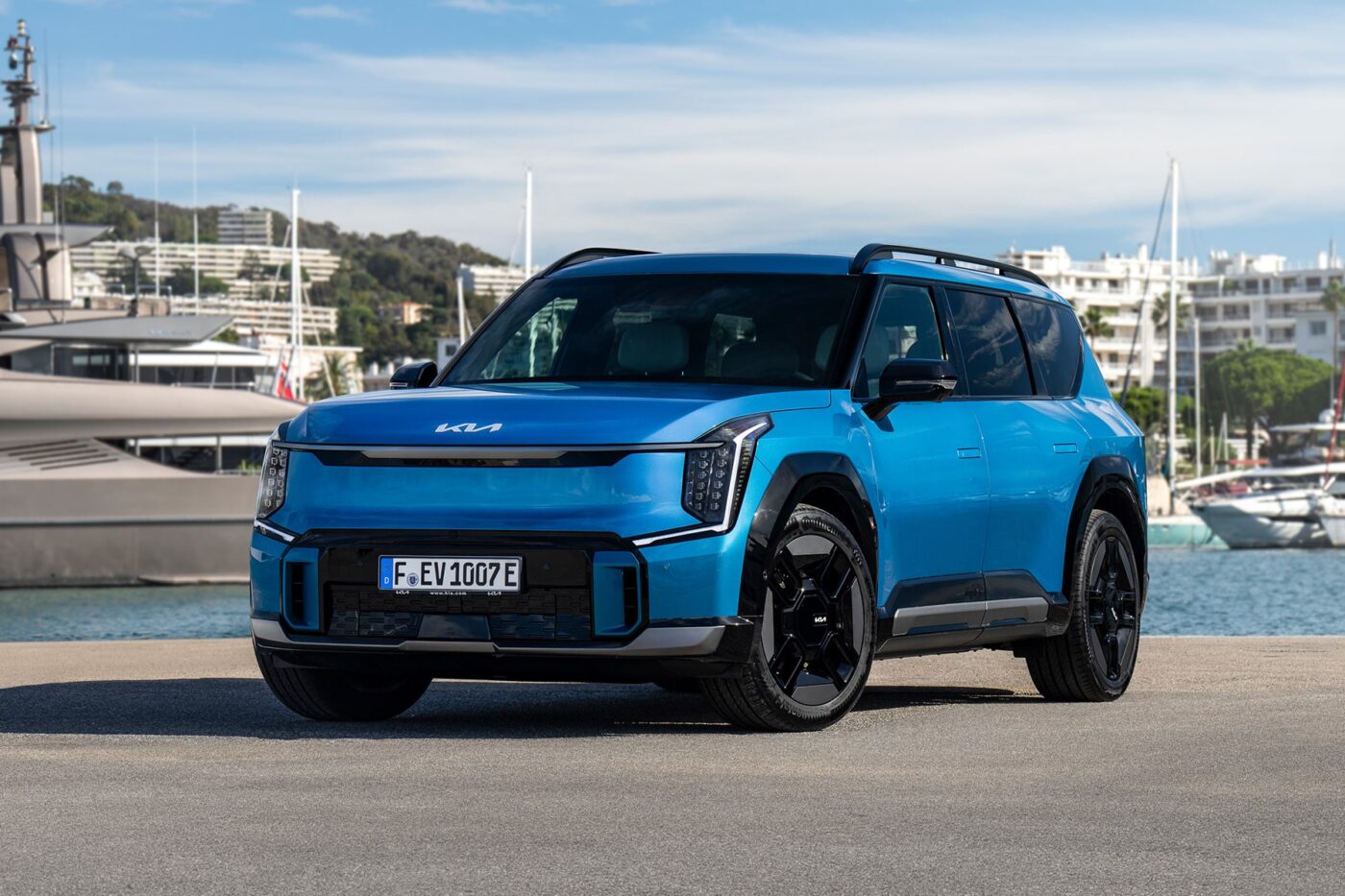
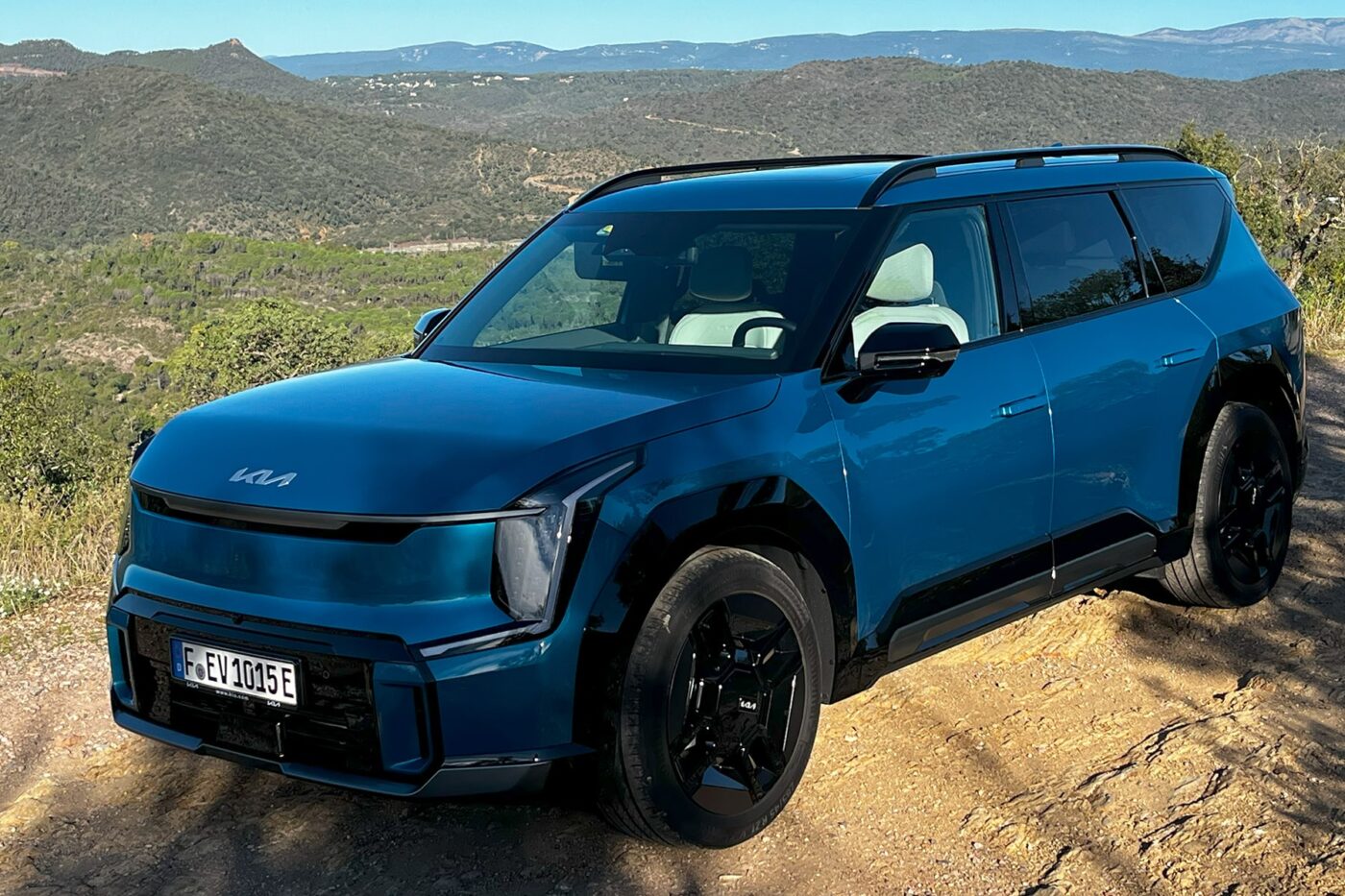
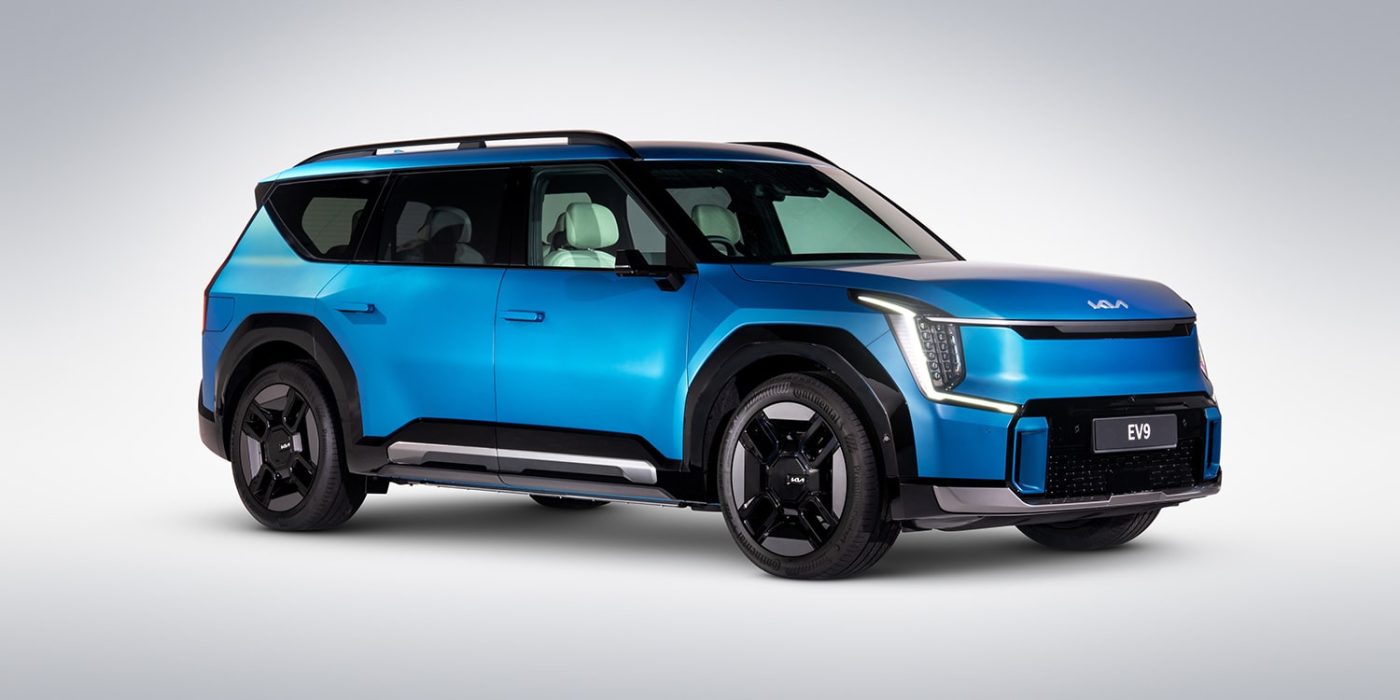
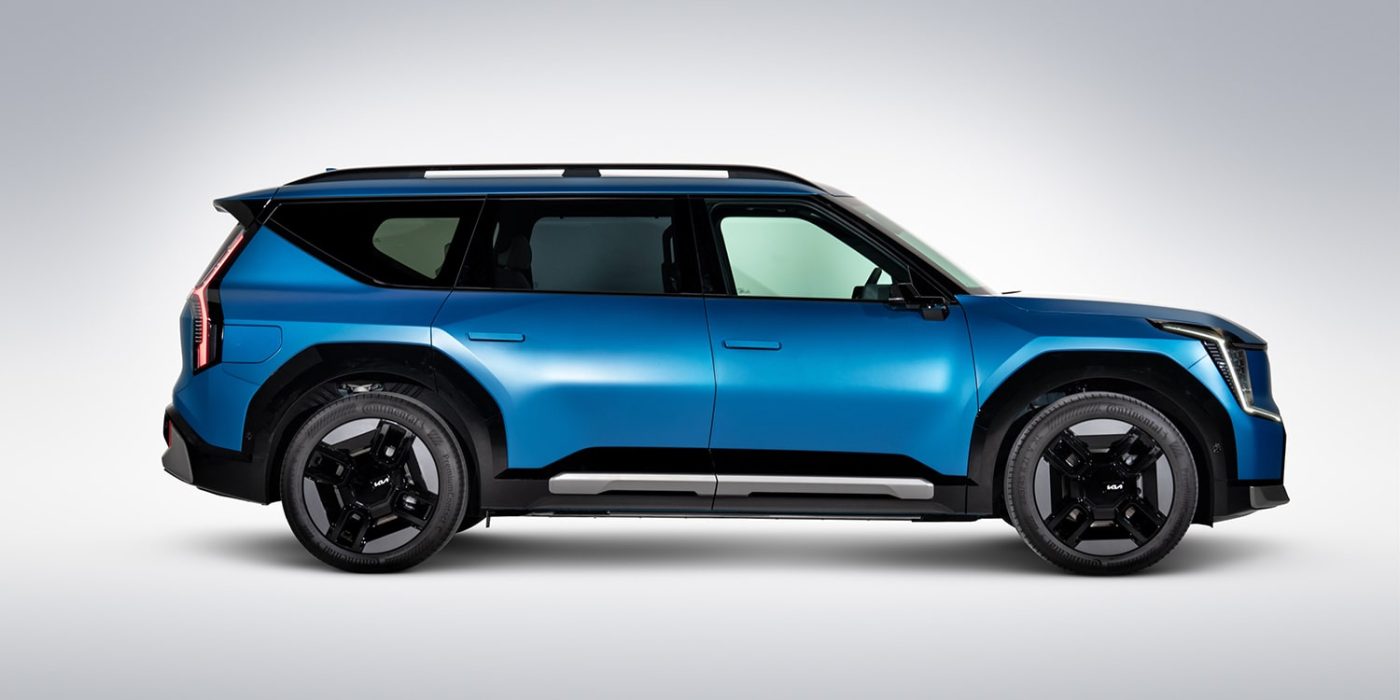
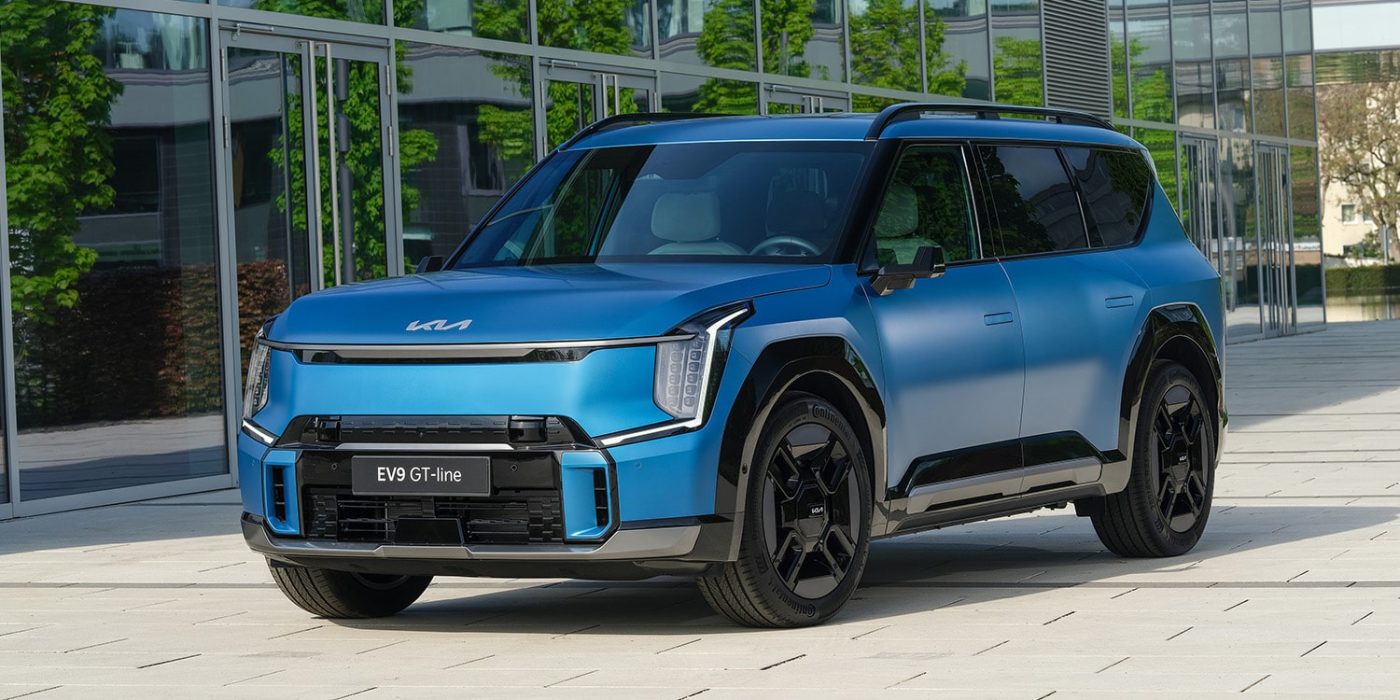
A table can be pulled out from the centre console, seat ventilation and heating in the first two rows and the excellent build quality round off the picture.
The only details worthy of critique are: the rear row lacks seat heating, only the front seat offers a massage, the cup holders are very rickety, and the glossy plastic used in places does not match the premium ambience of the rest of the vehicle.
Driving is fun – charging even more so
The car feels surprisingly light on its wheels despite its curb weight of 2.6 tonnes and the raised seating position. 283 kW (384 hp) accelerate it from 0 to 100 kph in 5.3 seconds, with a top speed of 200 kph. The suspension strikes a good balance between sportiness and comfort; it lets a few bumps through, feels relatively soft, and is safe on the road. Our total consumption is 25 kWh/100 km with much driving pleasure; on the motorway (driven in France at 130 kph), it climbs to 29 kWh/100 km, and 16 kWh/100 km is also feasible in the city. The promised 620 standard kilometres are, therefore, actually achievable but shrink to just over 300 kilometres at 130 kph. Charging is really pleasing; however, we achieve the catalogue value of 5 to 80 per cent in 25 minutes in real terms, as well as the specified peak power of 210 kW; the charging curve only drops below 200 kW at 60 per cent.
Well thought-out features
Electric exterior mirrors are optional for rearward visibility, and there is always a regular interior mirror that can be switched to a display mirror. What seems like a gimmick is very useful when the boot is loaded under the roof, blocking the view through the rear window. With the camera-based interior mirror, you can still clearly see what’s behind. Two glass roofs offer views above; the front opens electrically, and the rear is a fixed panoramic roof. Window blinds provide more privacy and sun protection, and power for mobile devices is available from numerous USB-C ports.
The option of an external Schuko socket via an adapter, remote key-controlled parking and the 50 to 90-litre frunk set the EV9 apart from the competition.
Infotainment is below expectations
The infotainment doesn’t quite match Kia’s premium image. The sound system is good, the sat nav guides you safely to your destination, and it is clearly laid out. At the same time, there are a few slip-ups in the operation: the touch bar below the screen only reacts if you really hit the capacitive buttons at precisely the right point with the proper pressure. Although the route planner searches for useful stops and has a well-sorted provider filter, it always wants to charge up to 100% and, therefore, overestimates journey times. Spotify integration will only come in an update. Wireless Android Auto and Apple Carplay also need to be added, which currently only work via cable.
Now and then, the system needs a second to “think”, and the voice control understands everything acoustically but cannot make sense of every command. Nevertheless, a lot has been improved since Kia introduced the last software version of the EV6, which has an identical infotainment system.
The head-up display deserves mentioning at this point, as it makes looking at the central console almost superfluous, mainly thanks to the good navigation display with precise indication of the current lane.
There is room for improvement in assistance systems
Adaptive cruise control and lane departure warning work well – once you figure out how to activate and operate them both. Even on winding highways, the steering assistant quickly becomes nervous, and the adaptive cruise control tends to brake a little hard and suddenly. The lane change assistant is at least too comfortable for the hectic French traffic. By the time the lane assistant feels assured enough to change lanes, one of the local hobby racing drivers has long since occupied the gap.










The sign recognition doesn’t always work perfectly either; sometimes, it sees too much (for example, speed limits that only apply to exits). The bell sounding when you exceed the speed limit is pleasantly subtle – the systems used by various competitors are much more annoying.
Family van dressed as SUV
With the EV9, Kia is adding a large premium SUV to its portfolio that could double as a minibus in terms of practicality. This creates a natural competitor: Volkswagen’s ID.Buzz. Both vehicles are in a similar price range. The basic trim costs around €8,000 (Buzz: €64,581.30; EV9: €72,490), but the EV9 with all-wheel drive, 60 kilowatts more charging power, the much higher quality interior and up to 2.5 tons of trailer load exceeds the Buzz in almost everything.
Of course, the van from Wolfsburg also has its strengths; for example, Volkswagen’s Travel Assist works much more confidently than its Kia counterpart, the exterior design is more likeable, and there are two lengths available—the shorter ID.Buzz has five seats and over 1,100 litres of trunk space and still measures only 4.71 metres – the EV9 reaches 800 litres with the third row of seats folded down and is an impressive 30 centimetres longer.
For those who value a lot of cargo space in compact dimensions, the Volkswagen van is the better choice and the cheaper vehicle. But if you want to get around faster and more comfortably for a moderate surcharge or have to tow a heavy trailer, you should choose the Kia.
Done nearly everything right
Almost 30 years ago, Kia ventured into the European market; for a long time, they were known for somewhat boring small and compact vehicles, at least to German buyers. The Korean company uses the EV transition for a sportier and higher quality image – with success. Not only has the design change been successful, but the focus is now on driving pleasure while maintaining a sense of everyday suitability. The EV9 still allows for minor adjustments, but Kia has already shown when coldgating the EV6 that they can learn and correct errors relatively quickly, even within one model cycle.
The EV9 makes it clear: the low-cost producer that started has become a serious competitor for the big players in the premium segment.
Translated by Nora Manthey


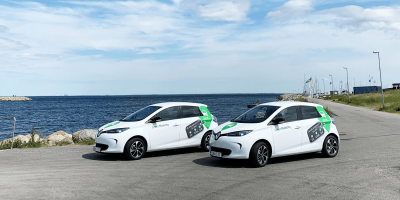

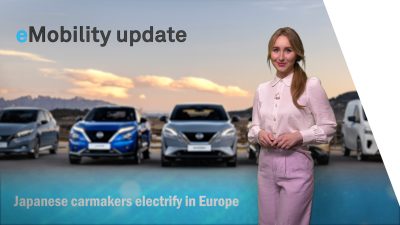
2 Comments